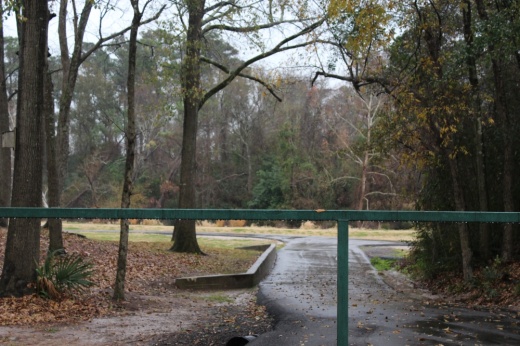A local task force’s proposal to collect funding for stormwater detention basins along Cypress Creek could prevent future potential flooding in the Cypress Creek Cultural district, project leaders said, but the project’s success will depend on the rest of the community’s participation.
Community group the Cypress Creek Flooding Task Force is focusing on two parcels of land located along Cypress Creek and hopes to garner support and funding from nearby utility and water districts so stormwater detention basins could eventually be built at the locations.
The basins could potentially prevent $17.9 billion worth of damage to 16,000 structures currently at risk during a 100-year flooding event, according to the task force’s strategic plan. The proposal is being spearheaded by task force President Glenn Wilkerson, Vice President Clara Lewis and Project Chair Calvin Cobb.
“We feel it’s important to target the entire corridor and work together. ... The strategic plan’s success depends on the participation of all the water districts,” Wilkerson told Community Impact Newspaper on March 28.
The group hopes to use $10.1 million in Harris County partnership funding that has been designated for the construction of stormwater detention basins in the Cypress Creek watershed. The partnership funding is part of the Harris County Flood Control District's $2.5 billion bond, which voters passed in 2018. If funds could be provided from utility districts along Cypress Creek, the partnership fund would match the funding 50-50, Cobb said.
The task force’s proposed locations are the two smallest land parcels out of nine detention basins recommended by the HCFCD along Cypress Creek between I-45 and Hwy. 249. According to the task force’s proposal, the land is already owned by HCFCD.
One of the parcels, located near Stuebner Airline Road, is 74 acre-feet, and would require an estimated $6 million for the design and construction of a detention basin, according to the proposal. The second parcel, located along Kuykendahl Road, measures 130 acre-feet and would need $6.8 million for a detention basin to be built.
Wilkerson said the two locations were selected, in part, because of their size and also because of their proximity to the Cypress Creek Cultural District—which includes community amenities, such as the Barbara Bush Branch Library, The Centrum, the Pearl Fincher Museum of Fine Arts and the future George H.W. Bush Community Center, which is under construction.
“There’s a lot at stake as far as the Cultural District,” Wilkerson said. “If the Cultural District floods again, I don’t think it will be rebuilt. That would also mean our current property values would plummet.”
Storm water detention basins were deemed the most effective strategy for fighting potential flooding in Cypress Creek Program Implementation Plan, which was released in January. As previously reported by Community Impact Newspaper, the report was completed by engineering firm Jones & Carter, which was awarded the project for $1.4 million by Harris County Commissioners Court in July 2020.
Task force officials are now working to speak to local utility and water districts along Cypress Creek, with the plan of ultimately presenting their proposal at a meeting in May, which will be headed by Precinct 3 Commissioner Tom Ramsey.
“We don’t have a vested interest in this,” Cobb said. “We are not property owners, we are not developers. It’s just community-driven stuff.”
Other members of the Cypress Creek Flooding Task Force include Bobby Lieb, president of the Houston Northwest Chamber of Commerce; Jim Robertson, chair of the Cypress Creek Greenway Project; Shah Ardalan, president of Lone Star College-University Park; Barbara Schlattman, chair of the Green Medians Project; and Clara Maynard, head librarian of the Barbara Bush Branch Library.
Hannah Zedaker and Danica Lloyd contributed to this report.





